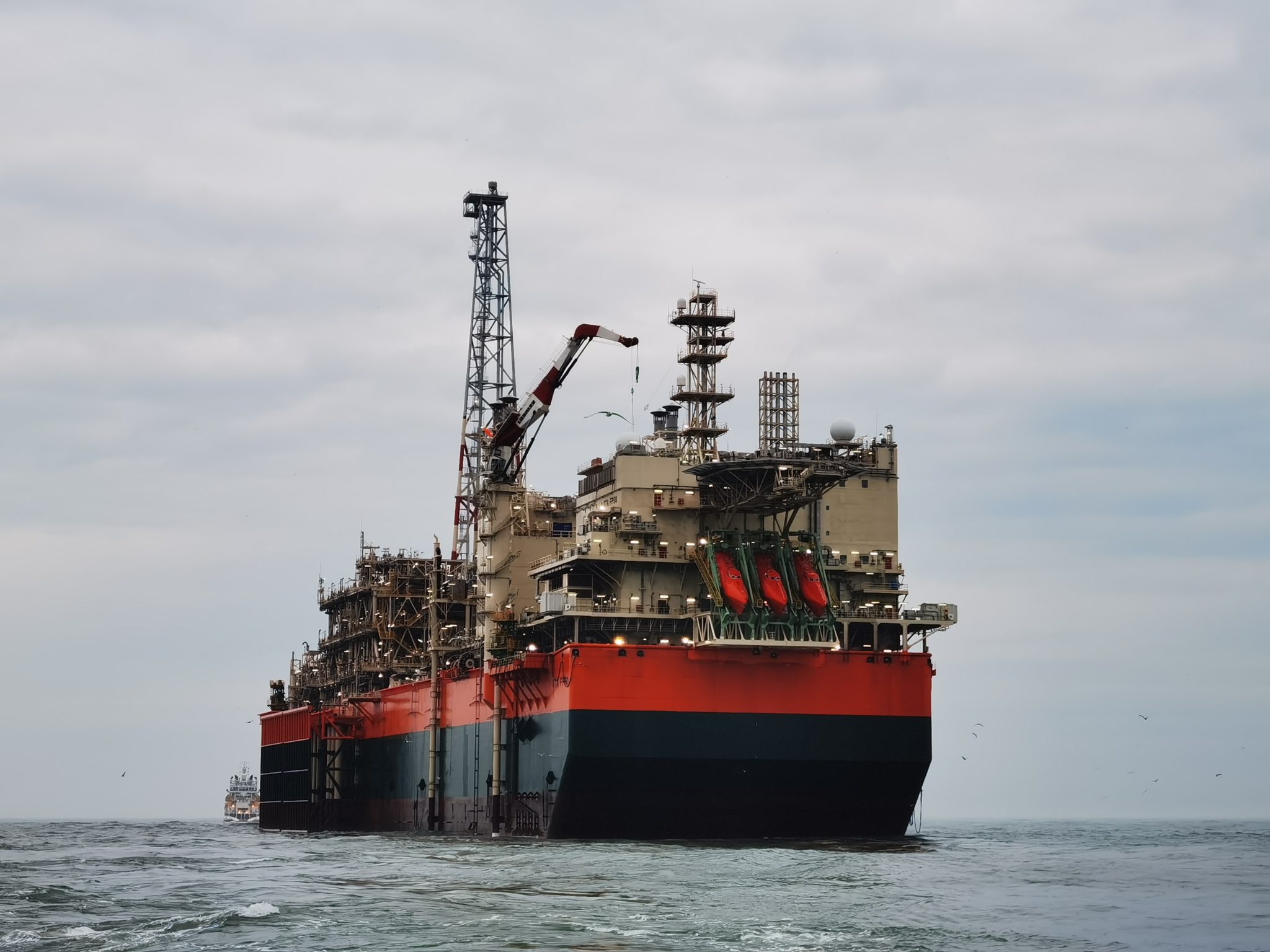NEWS
Senegal: GTA's FPSO is on its way to the Senegal-Mauritania coast

Le FPSO construit pour le projet de gaz naturel liquéfié (GNL) Greater Tortue Ahmeyim (GTA) exploité par BP a mis les voiles vers le site du projet au large des côtes de la Mauritanie et du Sénégal.
The FPSO left the Cosco shipyard in Qidong, China, on Friday, January 23, after completing sea trials following construction over the past three and a half years.
Il parcourra désormais 12 000 milles nautiques via Singapour jusqu’à sa destination finale, à environ 40 kilomètres au large à la frontière maritime des pays voisins. Selon Kosmos Energy, partenaire de BP dans le projet, le FPSO devrait atteindre sa destination finale au deuxième trimestre de l’année.
Le FPSO est un élément clé du développement intégré majeur de GTA qui comprend également le développement sous-marin de gisements de gaz et d’installations flottantes de GNL (FLNG) près du rivage. La première phase du projet devrait produire environ 2,3 millions de tonnes de GNL par an.
Le FPSO traitera le gaz naturel – en éliminant les condensats, l’eau et d’autres impuretés – avant de l’exporter par pipeline vers les installations FLNG du projet, à 10 km au large. Avec huit modules de traitement et de production, le FPSO traitera environ 500 millions de pieds cubes standard de gaz par jour.
Selon BP, la majorité du gaz sera liquéfié par les installations du FLNG et exporté vers les marchés internationaux, tandis qu’une partie sera utilisée pour répondre à la demande croissante dans les deux pays hôtes. Le condensat sera périodiquement transféré du FPSO vers des navettes citernes pour être exporté vers le marché.
Le FPSO sera situé dans environ 120 mètres d’eau, pourra accueillir jusqu’à 140 employés pendant les opérations régulières et servira de domicile à l’équipe de production du projet.
Le FPSO mesure 270 mètres de long, 54 mètres de large et 31,5 mètres de profondeur. D’une superficie équivalente à deux terrains de football et aussi haut qu’un immeuble de 10 étages, le FPSO est composé de plus de 81 000 tonnes d’acier, 37 000 m de bobines de tuyaux et 1,52 million de mètres de câble.
Gordon Birrell, BP's executive vice president of production and operations, a déclaré : “Il s’agit d’une étape fantastique pour cet important projet, qui est un excellent exemple de la stratégie résiliante des hydrocarbures de BP en action.”
“L’équipe a livré cela dans un environnement difficile, y compris par le biais de COVID, en gardant toujours la sécurité des opérations au cœur de ce qu’elle fait. Avec le soutien continu de nos partenaires, la Société Mauritanienne des Hydrocarbures en Mauritanie, Petrosen au Sénégal et Kosmos Energy, nous restons déterminés à aider les deux pays à développer leurs ressources de classe mondiale de manière durable.
BP a attribué à Technip Energies un contrat pour l’ingénierie, l’approvisionnement, la construction, l’installation et la mise en service (EPCIC) du FPSO GTA en 2019. Ceci est intervenu après que Technip Energies a achevé l’ingénierie et la conception initiales (FEED) du projet.
Selon Technip Energies, la fonction clé du FPSO est d’éliminer l’eau, le condensat et de réduire les impuretés dans le flux de gaz avant d’exporter le gaz traité vers l’installation FLNG en Mauritanie et au Sénégal.
A noter qu’en septembre 2022, le FPSO a dû être ramené à quai après avoir dérivé à cause de l’impact du typhon Muifa.
Le navire avait dérivé d’environ 200 mètres du quai, après que ses amarres aient été compromises lors du typhon du 15 septembre 2022. Le partenaire de BP, Kosmos, a déclaré le 27 septembre 2022 que “les inspections menées à ce jour n’ont identifié aucun dommage significatif. “
In a statement issued Monday, commenting on the departure of the FPSO from China, Andrew G. Inglis , président-directeur général de Kosmos Energy, a déclaré : « Le départ du FPSO GTA depuis le chantier naval en Chine est une étape clé du projet. À la fin de 2022, le projet était achevé à environ 90 %, et nous attendons avec impatience une année 2023 active où nous prévoyons de franchir un certain nombre d’étapes importantes pour le projet et l’entreprise. »
-

 ANALYSIS1 an ago
ANALYSIS1 an agoThe 3 African countries richest in natural resources
-

 NEWS11 month ago
NEWS11 month agoTop 10 des pays africains producteur de l’or : Mali 2-eme, Burkina Faso 3-eme
-

 FOCUS ONA1 an ago
FOCUS ONA1 an agoThe 10 largest oil refineries in Africa
-

 FOCUS ONA11 month ago
FOCUS ONA11 month agoTop 10 oil producers in Africa in 2023
-

 NEWS2 ans ago
NEWS2 ans agoRanking of oil producers: Here are the Top 10 African countries.
-

 NEWS8 month ago
NEWS8 month agoAfrica's 10 largest natural gas production fields.
-

 NEWS2 ans ago
NEWS2 ans agoTop 20 oil producing countries in 2022
-

 NEWS10 month ago
NEWS10 month agoIvory Coast: Eni to deploy a cylindrical FPSO and a converted FSO on the Baleine oil field










